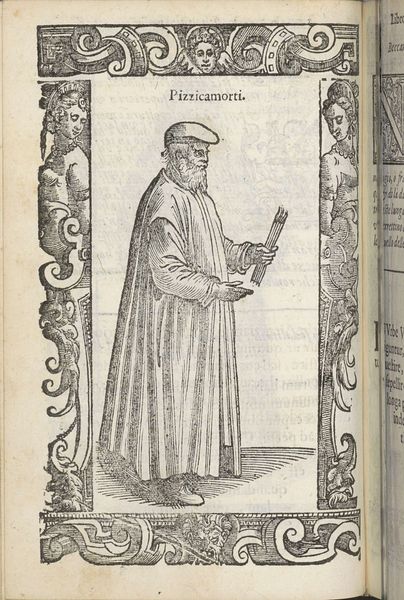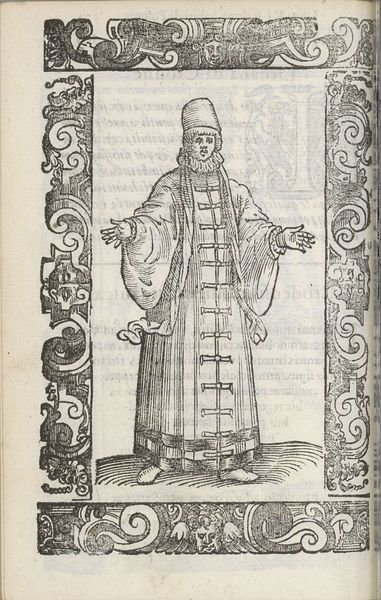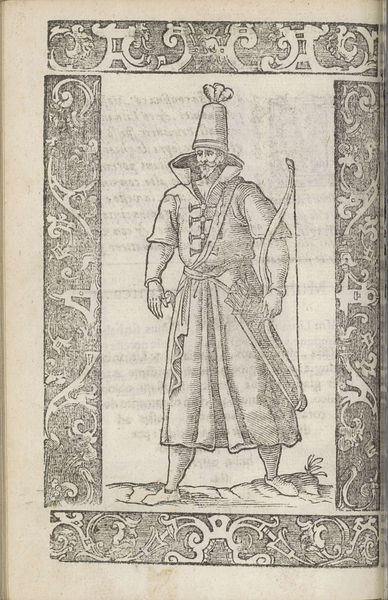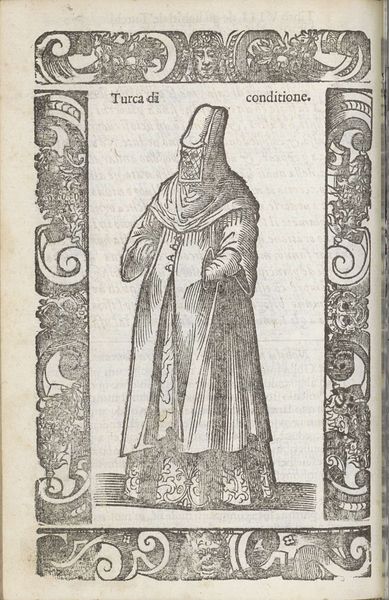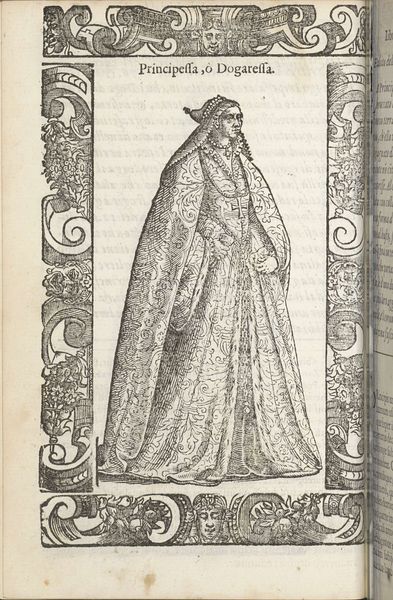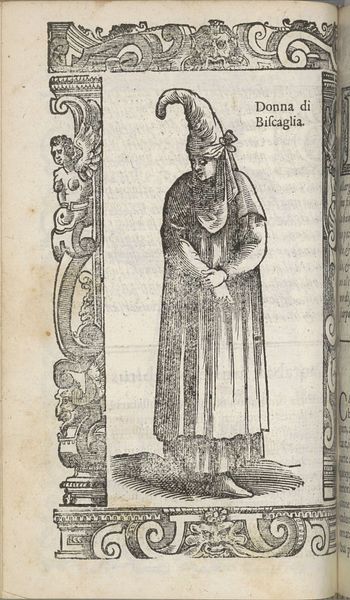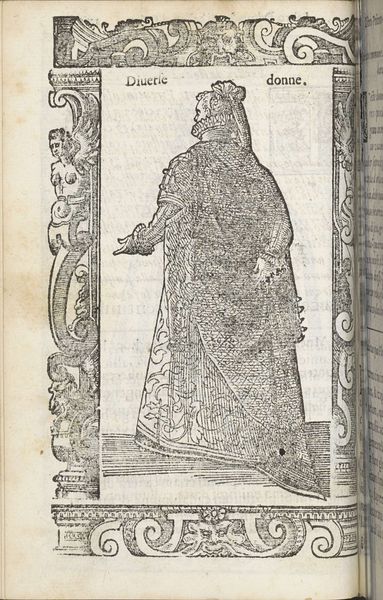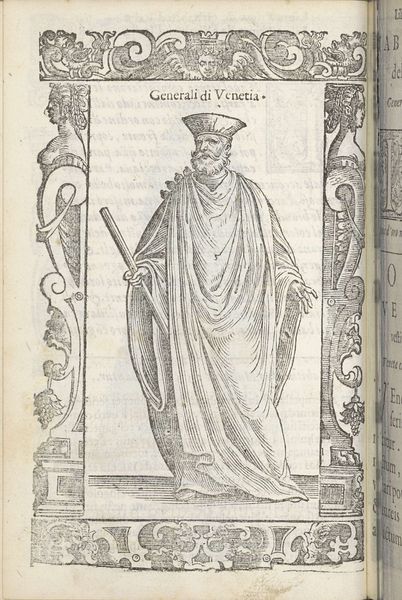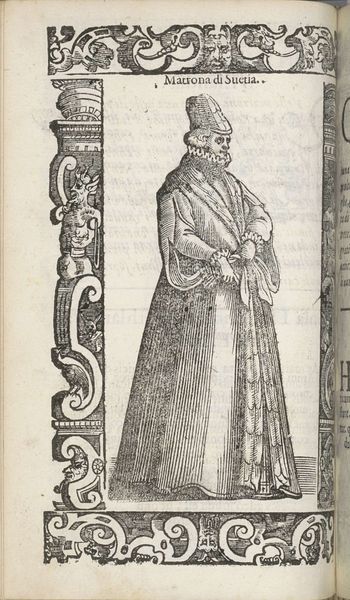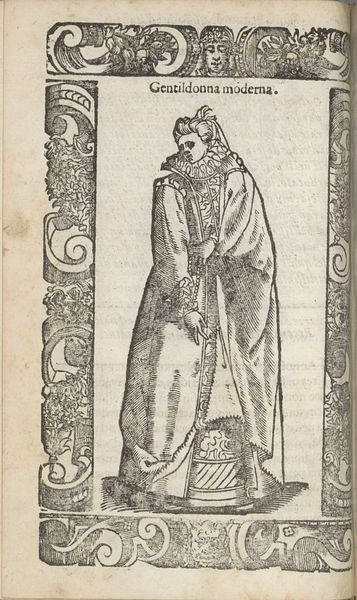
print, engraving
#
portrait
#
medieval
# print
#
figuration
#
line
#
engraving
Dimensions: height 167 mm, width 125 mm
Copyright: Rijks Museum: Open Domain
Curator: This engraving, titled "Calabrese," created around 1598 by Christoph Krieger, depicts a standing figure. It’s a fascinating example of portraiture from that period rendered in print. Editor: I am struck by the sheer meticulous detail; you can almost feel the fabric of his cloak through those precisely etched lines. It gives a sense of somber gravity and age. Curator: Krieger worked during a time when prints served as important tools for disseminating information, fashion, and, importantly, social identities across Europe. Prints had incredible social currency as well. Editor: It feels as though there is a deep historical undercurrent with this piece. Can you speak about the choice of “Calabrese” for the name of this print, and perhaps how its symbolism plays into all of that? Curator: Certainly. The figure is identified as being from Calabria, a region in southern Italy. Prints like this, presenting regional figures, often reinforced ideas about local customs, stereotypes and dress within a larger European context. We have to consider its position as an object consumed within early information networks. Editor: So it's as much an anthropological document as it is art. He's got this gesture, a kind of outward motion with his fingers. The lines almost look like they are creating an imaginary space right in front of us. A boundary perhaps? Curator: Possibly. Or an invitation. His clothes also tell us quite a bit—the cut, style, the fabrics represented through careful engraving, were all intended to signify something specific about status and regional identity. And the ornate frame almost boxes the image within a kind of self-contained theater. Editor: Looking closer, even the floral ornamentation and figures intertwined in the frame around the central portrait suggests a controlled, constructed view. "Calabrese" really prompts consideration for not just who he was, but how those looking viewed the space between him, the region, and ultimately, them. Curator: Precisely. These prints were active participants in identity making. It's a reminder of how deeply art is woven into the social and political fabric of its time. Editor: Indeed. I love how a relatively small print can open such a vast window into a historical way of seeing. It’s quite stunning.
Comments
No comments
Be the first to comment and join the conversation on the ultimate creative platform.
